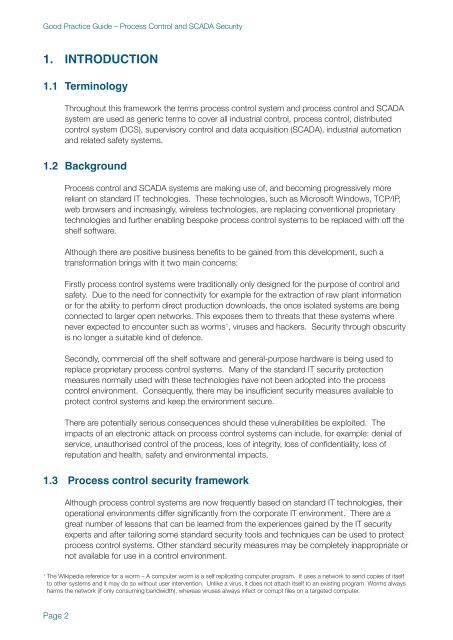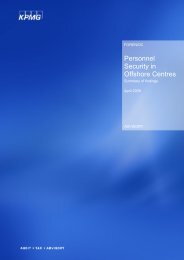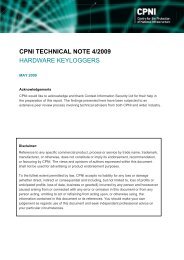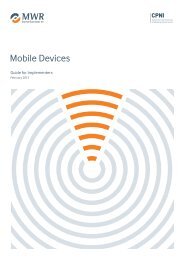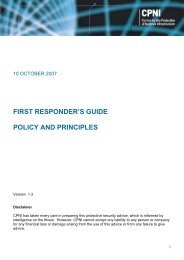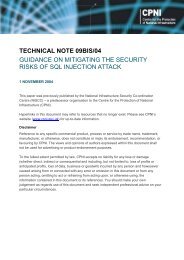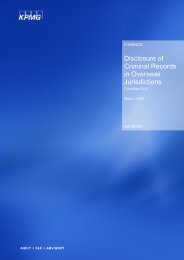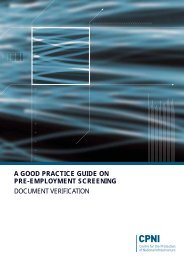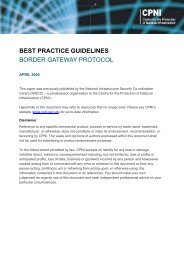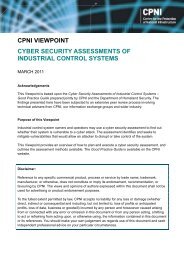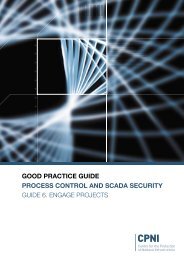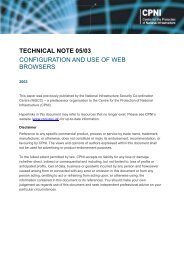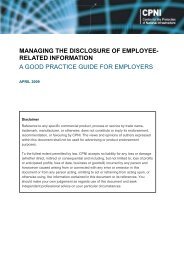establish ongoing governance - CPNI
establish ongoing governance - CPNI
establish ongoing governance - CPNI
You also want an ePaper? Increase the reach of your titles
YUMPU automatically turns print PDFs into web optimized ePapers that Google loves.
Good Practice Guide – Process Control and SCADA Security<br />
1. INTRODUCTION<br />
1.1 Terminology<br />
Throughout this framework the terms process control system and process control and SCADA<br />
system are used as generic terms to cover all industrial control, process control, distributed<br />
control system (DCS), supervisory control and data acquisition (SCADA), industrial automation<br />
and related safety systems.<br />
1.2 Background<br />
Process control and SCADA systems are making use of, and becoming progressively more<br />
reliant on standard IT technologies. These technologies, such as Microsoft Windows, TCP/IP,<br />
web browsers and increasingly, wireless technologies, are replacing conventional proprietary<br />
technologies and further enabling bespoke process control systems to be replaced with off the<br />
shelf software.<br />
Although there are positive business benefits to be gained from this development, such a<br />
transformation brings with it two main concerns:<br />
Firstly process control systems were traditionally only designed for the purpose of control and<br />
safety. Due to the need for connectivity for example for the extraction of raw plant information<br />
or for the ability to perform direct production downloads, the once isolated systems are being<br />
connected to larger open networks. This exposes them to threats that these systems where<br />
never expected to encounter such as worms 1 , viruses and hackers. Security through obscurity<br />
is no longer a suitable kind of defence.<br />
Secondly, commercial off the shelf software and general-purpose hardware is being used to<br />
replace proprietary process control systems. Many of the standard IT security protection<br />
measures normally used with these technologies have not been adopted into the process<br />
control environment. Consequently, there may be insufficient security measures available to<br />
protect control systems and keep the environment secure.<br />
There are potentially serious consequences should these vulnerabilities be exploited. The<br />
impacts of an electronic attack on process control systems can include, for example: denial of<br />
service, unauthorised control of the process, loss of integrity, loss of confidentiality, loss of<br />
reputation and health, safety and environmental impacts.<br />
1.3 Process control security framework<br />
Although process control systems are now frequently based on standard IT technologies, their<br />
operational environments differ significantly from the corporate IT environment. There are a<br />
great number of lessons that can be learned from the experiences gained by the IT security<br />
experts and after tailoring some standard security tools and techniques can be used to protect<br />
process control systems. Other standard security measures may be completely inappropriate or<br />
not available for use in a control environment.<br />
1<br />
The Wikipedia reference for a worm – A computer worm is a self replicating computer program. It uses a network to send copies of itself<br />
to other systems and it may do so without user intervention. Unlike a virus, it does not attach itself to an existing program. Worms always<br />
harms the network (if only consuming bandwidth), whereas viruses always infect or corrupt files on a targeted computer.<br />
Page 2


